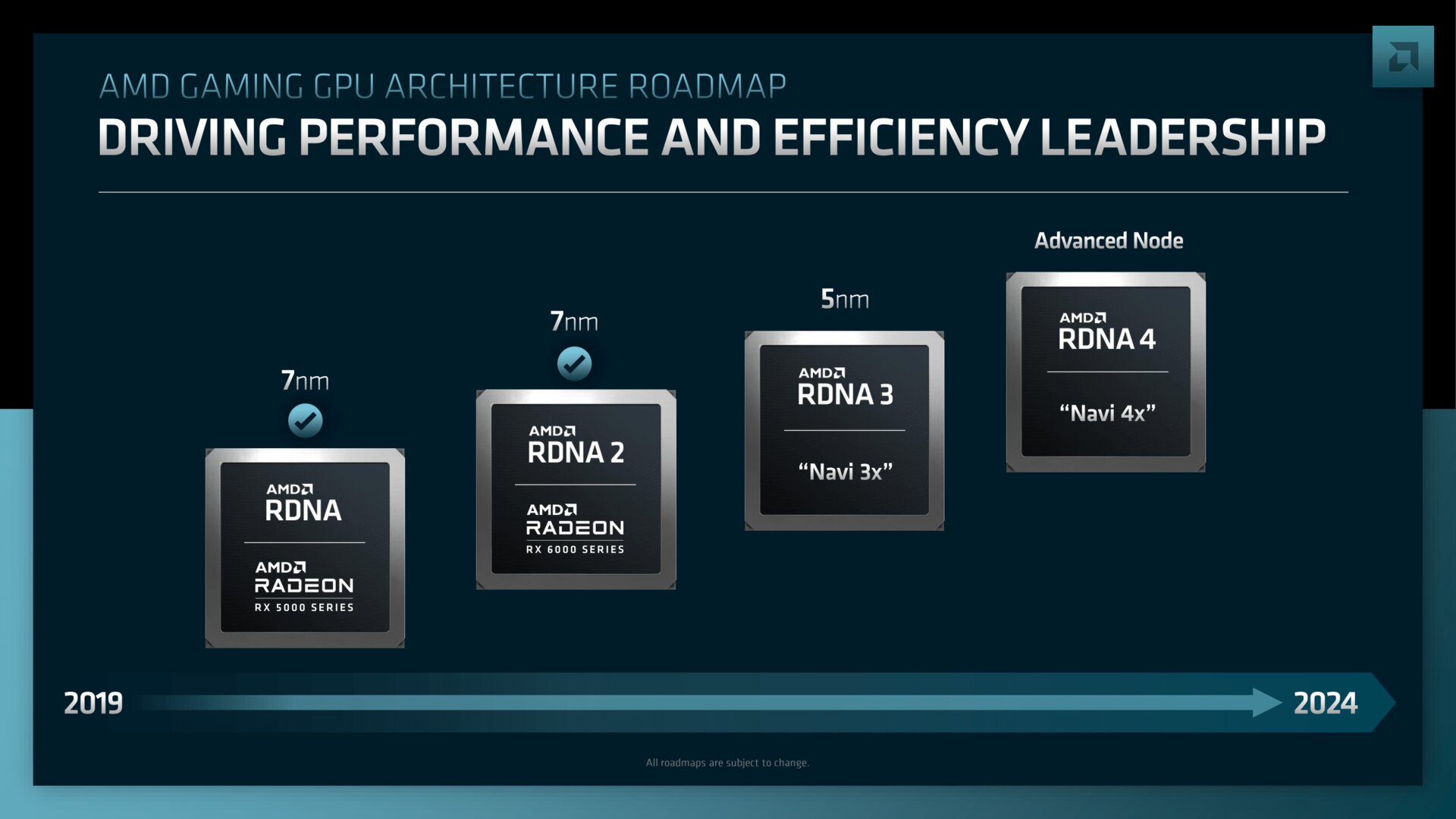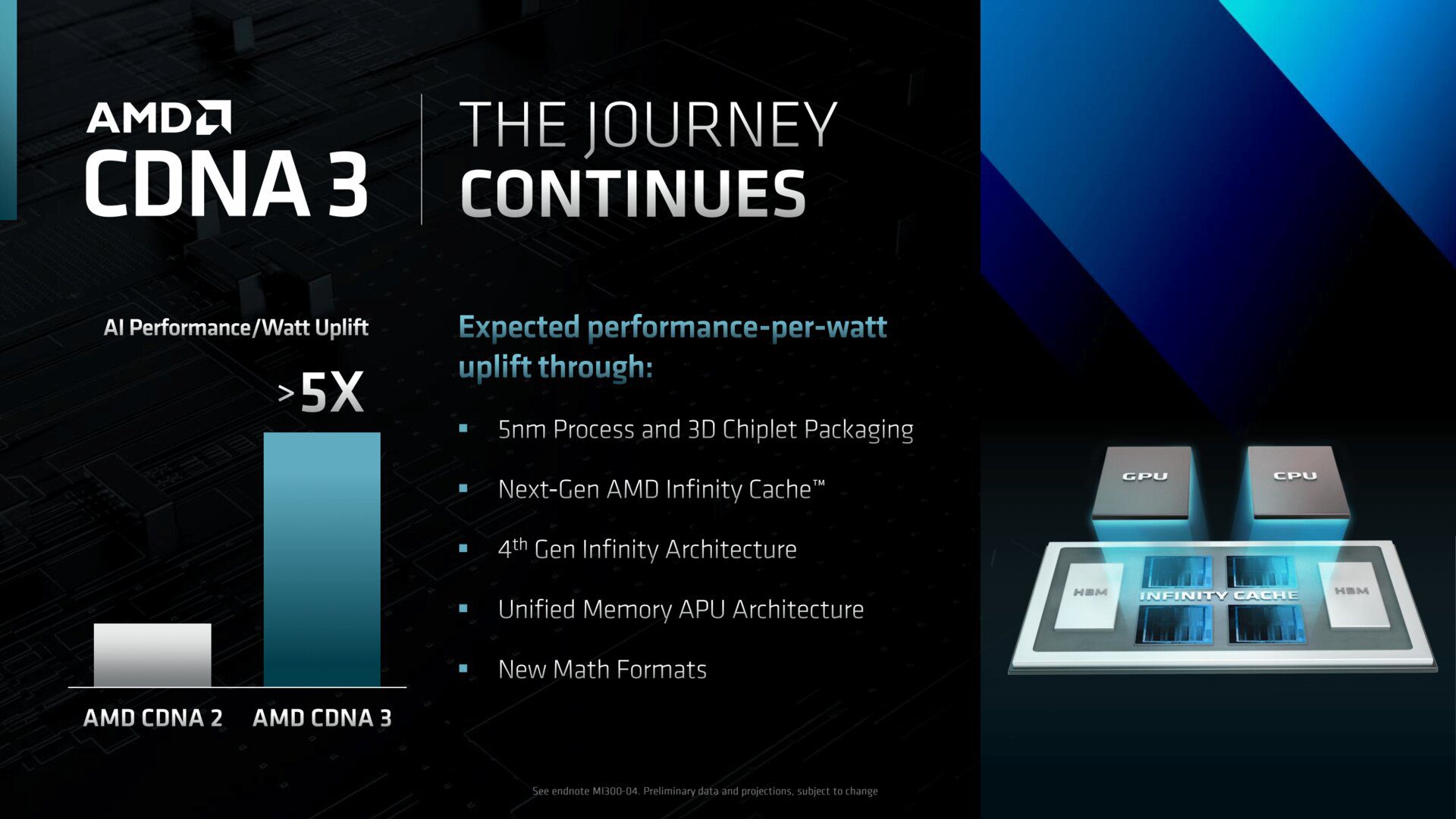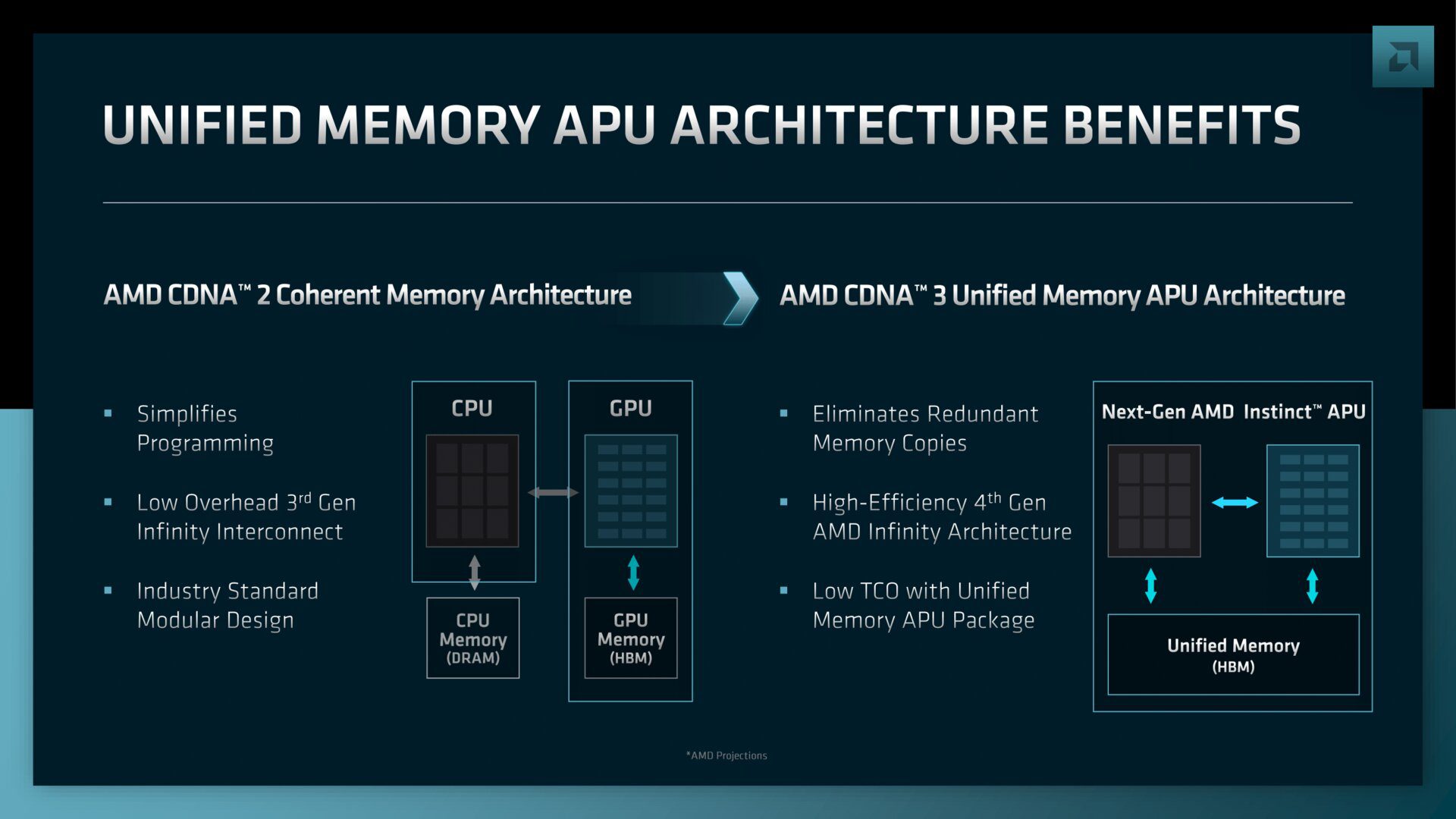

At Financial Analyst Day 2022, AMD not only announced the IPC bump from Zen 3 to Zen 4, but also gave the first details on RDNA 3 as the basis for the Radeon RX 7000 and CDNA 3 as the basis for the HPC Instinct MI300 accelerator. . A chiplet design for RDNA 3 has been confirmed, and CDNA 3 even uses Infinity Cache for the GPUs.
RDNA 3 uses chiplets but does not stack them
The fact that AMD is going for a multi-chip approach to RDNA 3 has been rumored since the summer of 2021. But it had to be June 2022 for AMD to confirm exactly that. AMD calls this technology “Advanced Chiplet Packaging”. AMD, on the other hand, left it open which chiplets are used in which RDNA 3 GPUs, so the next few weeks should again see a wide variety of reports on the number of compute and infinite cache chiplets circulating through the AMD factory. rumours.
What AMD has confirmed is that RDNA 3, like Zen 4, will be manufactured on a 5nm process, using new compute units and a revised rendering pipeline. The fast Infinity Cache is also said to be launched in a new generation. Whether this means more than outsourcing it to separate chips that also contain the GDDR6 memory controller remains to be seen.
All manufacturing, packaging, and architectural changes are designed to give RDNA 3 a more than 50 percent increase in performance over RDNA 2 at the same power consumption.
AMD also mentioned AV1 encoding capabilities and DisplayPort 2.0 support as additional features of the RDNA 3 architecture on the audio track. With Navi-4x GPUs based on RDNA 4, the successor to the RDNA 3 architecture should appear in 2024, but AMD did not say another word about it.
CDNA 3 puts two GPUs in the infinite cache
AMD also first discussed the next generation of HPC CDNA 3 GPU architecture, whose current CDNA 2 expansion stage on Instinct MI250(X) graphics cards will equip the world’s fastest supercomputer by the end of the year. CDNA 2 is already based on a multi-chip package with two GPUs and HBM in one package, but it still lacks Infinity Cache. With CDNA 3, that will change.
AMD has confirmed that CDNA 3 based on the 4th generation Infinity Fabric will be the first to stack chips from a GPU. The technology is called “3D chiplet packaging”. Infinity Cache sits on the “base layer” like HBM memory, the GPUs, again two as per the figure, sit on top.
With the announcement of stacking technology for CDNA 3, it is also certain that RDNA 3 will not rely on stacked chips just yet. The fact that RDNA is based on new packaging technologies a generation later than CDNA could become the norm in the future.
Like RDNA 3 and Zen 4, CDNA 3 is also said to come from a 5nm process and AMD is promising serious performance advantages for Instinct MI300 products based on it for AI workloads by more than a factor. out of 5 compared to CDNA 2. However, this is also necessary, if the next generation is to at least compete against Nvidia Hopper: The GH100 GPU is significantly stronger than CDNA 2 in AI workloads.
Zen 4 CDNA 3 APU arrives
AMD has also confirmed an APU that will be based on a Zen 4 CPU and a CDNA 3 GPU on a unified memory interface, meaning the CPU and GPU share HBM memory. Rumors about it had surfaced in May. CDNA 3 should appear at the end of 2023, but it remains to be seen whether this also applies to the APU.






